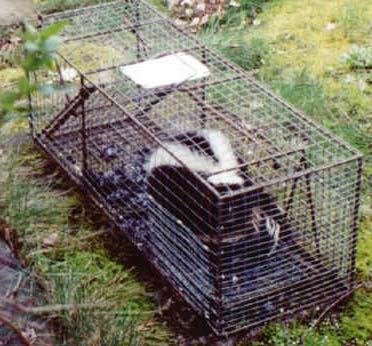While most people aren’t fond of these creatures, it is important to understand how to trap a skunk humanely as part of a skunk removal process. Not only for the safety of the animal, but also for your own personal safety. First, make sure that the trap is large enough for the skunk to fit inside. Don’t cram a full sized skunk into a live trap that is too small for them. They can get hurt being cramped like that, especially if you struggle to get the door to shut behind them.
There are traps designed specifically for skunks, but you don’t have to invest in them. If you have a pet carrier for a dog or a cat, this can work just as well. If you are dealing with a family of skunks, try to transport them all in one carrier if there is enough room to do so. Do your best not to touch them as a human scent on them could make it hard for them to avoid predators when you release them.
Bait the live trap with food that will entice the skunk to go inside of it. Once the entire body is inside, you can safely shut the door. Immediately take the skunk in the trap to a location where it can be released back into the wild. Don’t take them more than 2 miles from where you found them though. If they aren’t released back into their habitat environment where they have an established niche, then there is only about a 20% chance that they will survive.
Now that you know how to trap a skunk humanely, you can do so without harming the creature or allowing them to remain around your property. If you aren’t confident in your abilities though, call animal resources in your local area. They can come out with a trap and they can get the skunk removed for you quickly and without incident.
